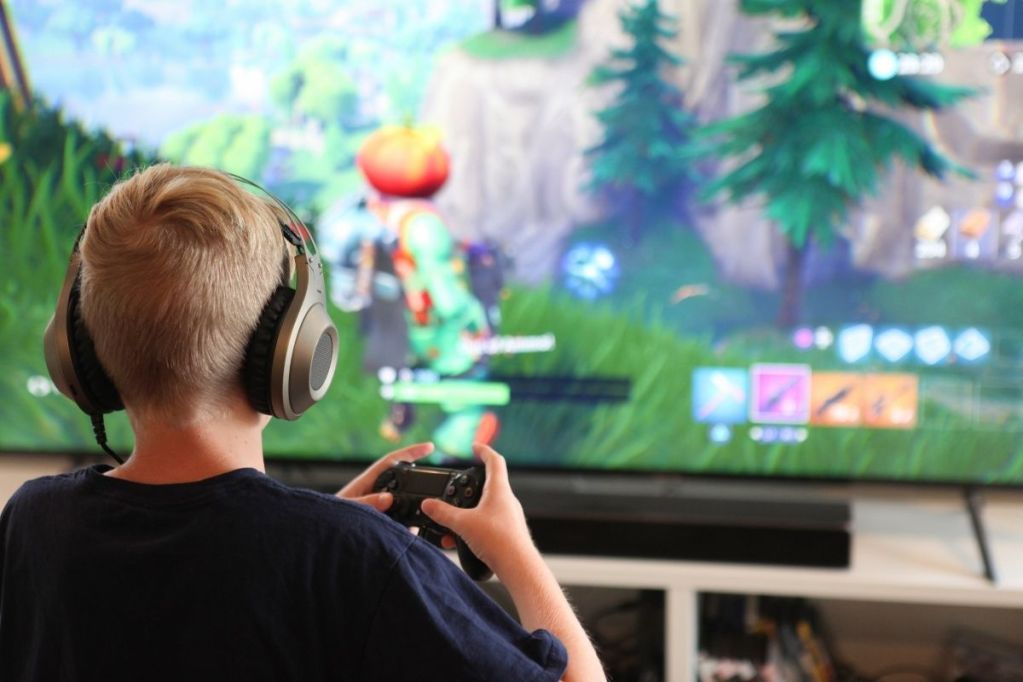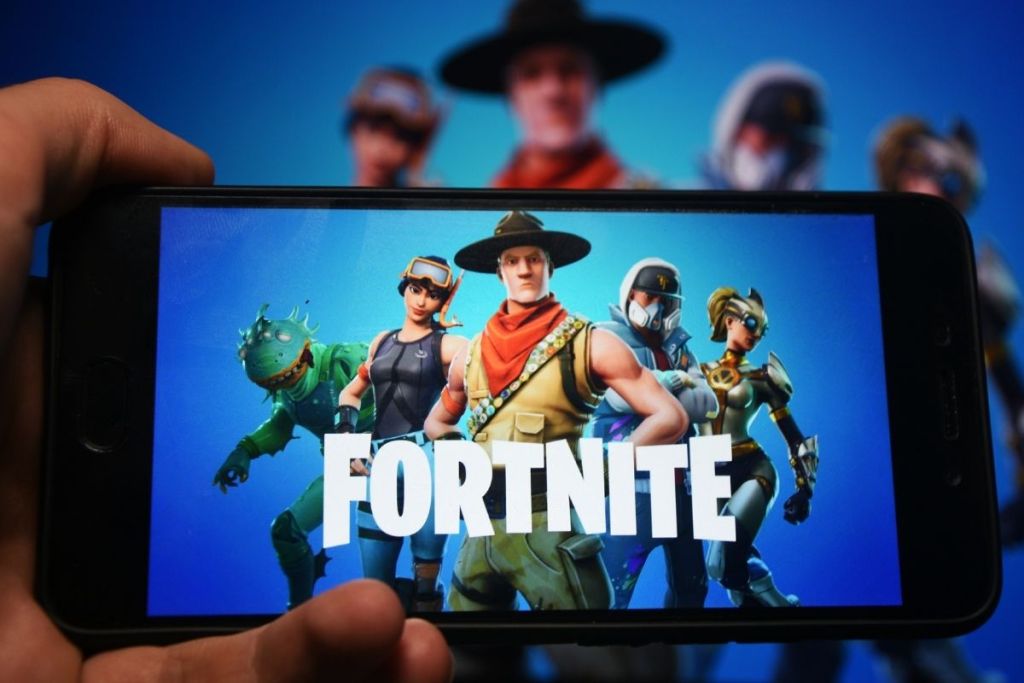
If you have kids, chances are you’ve heard of the video game Fortnite. Not only has the game gone viral but so have the songs and dances, thanks to social media. If they aren’t already playing it, your kids are probably begging you to play it while telling you how all of their friends are already playing. Fortnite is one of the most popular games for gamers of all ages, and its lack of blood and gore is attractive to parents. The fact that it’s still a shooting game can be concerning.
Deciding when your child is ready for a game like Fortnite is a complex choice and we’ve gathered expert opinions to help you make an informed decision. There are several factors to take into account and we’ll walk you through each one before you let your child even create an avatar.

What is Fortnite?
Fortnite is a video game that came out in 2017 from developer Epic Games. There are currently three versions. There is an up to four players versus the environment version called Fortnite: Save the World, a multi-player, up to 100-player version called Fortnite Battle Royale, and a fun freedom space version called Fortnite Creative. Creative and Battle Royale are free to play, but Save the World costs parents real-life money. Battle Royale is the most popular version and the one your kiddo most likely wants to play.
In Battle Royale, play in solo (alone), duo (with one other player), or squad mode (a team of four). In a match, up to 100 players fight until there is one winner left standing (think The Hunger Games). Players in a match are in the same mode, and players kill opponents by shooting each other with guns. There’s no blood and players who are killed simply disappear.
In Save the World, the last remaining humans must collaborate to survive zombies in a post-apocalyptic world. Not the best game, but teamwork and how to survive a zombie apocalypse might come in handy one day.
In Creative, players get to have a relaxed and more, well, creative time. Players can create courses, battle arenas, and spawn any item of their choosing from Battle Royale to their personal island. This one doesn’t sound too bad.
You can play one version or another of Fortnite on PlayStation 4, PlayStation 5, Xbox One, Xbox Series X/S, Nintendo Switch, macOS, Windows computers, Android phones, and of course, iOS. You need a Wi-Fi connection to play.

What ages is Fortnite appropriate for?
Fortnite is rated T for Teen by the ESRB (Entertainment Software Rating Board) for violence. Their rating gives a further description of the game and why they rate it for ages 13 and up:
From a third-person perspective, players use guns, swords, and grenades to fight skeleton-like monsters (husks) in ranged and melee-style combat. Players can also defeat enemies by using various traps (e.g., electric, spikes, poisonous gas). Battles are highlighted by frequent gunfire, explosions, and cries of pain. In Battle Royale mode, players compete in “last-man-standing”-style shootouts with other players on an island with diminishing borders.
Frannie Ucciferri, Associate Managing Editor at Common Sense Media, writes “Common Sense doesn’t recommend games with open chat for kids under 13, but with the right controls and parental guidance, this can be a tween-friendly alternative to violent first-person shooters.” She continues, “For some parents, the cartoonish, bloodless style of the action in Fortnite makes the violence less problematic than the aggressive gore in other popular shooter games. But the game’s online chat feature, especially in Battle Royale, could expose younger players to offensive language or mature content from random strangers.”

Is Fortnite good for kids?
There are pros and cons of Fortnite for kids. “There are amazing opportunities for collaboration, communication, problem-solving, perseverance, and other skills that make our kids into the humans we hope they can be,” parenting and child development expert Dr. Deborah Gilboa told TODAY Parents. However, there are also dangers. “Supervise your kids, especially those under 14, while they play this game,” Gilboa advised.
Dr. Randy Kulman is a clinical child psychologist and agrees with the ESRB rating of Teen. He writes for Psychology Today, “I don’t think it is an age-appropriate game because of the nature of the violence. Yes, it is cartoonish, and death in Fortnite can be immediately followed by starting a new game, but the killing is random — if you see any other player, it’s either kill or be killed.”
Unlike the possibilities for collaboration Dr. Gilboa mentions, Dr. Kulman disagrees: “Everyone is your enemy: There are no friends, and you are all competing at the highest level for your survival. It’s not a great way to foster the type of collaboration that our planet and humankind need in the future. Because younger children are still developing their capacities for understanding abstract concepts, others who are different, and hypothetical questions, the messaging of games such as Fortnite is troubling.”
An additional concern to the game’s content is that players interact with each other over voice chat. That means your child could hear any (violent, bullying, homophobic, sexist, sexual) thing a stranger might say. Another danger is your young child could be befriended or groomed by an inappropriate stranger through the game.

Are there parental controls in Fortnite?
Allowing your child access to video games is a personal decision that can be difficult to make, especially for games as popular as Fortnite. Epic Games has implemented parental controls that help make the decision for parents easier, as they can control their “child’s access to social features and purchasing within games,” such as Fortnite. They also allow parents the ability to limit who their child can voice or text chat to while playing, as well as restricting any purchasing abilities. Parents can set limits on which games they want their child to have access to and it will even give you a report on your child’s playtime each week. Enabling some of these parental controls may make the decision to let your child play a bit easier because you can monitor how they play and who they play with.
While kids may wish to start earlier, the experts and professional organizations recommend waiting until 13 years old to let them play. Learning to shoot and kill has become normalized in video games, but it’s not something to take lightly. There are plenty of plenty of other games to play while your kids are still young children. But you can still learn the songs and dances together as a compromise.
Editors' Recommendations
- Is your kid screaming for no reason? Here are ways to deal with a screaming child’s behavior
- These weight loss tips for teenagers really work and are good for their self-esteem
- 12 birthday party ideas for 5-year-olds to have at home
- Why you should celebrate your kids’ inchstones
- 6 reasons why all parents should let their kids have cellphones




